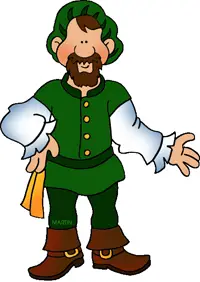Early Middle Ages
So, you’d like to know about the Middle Ages? First, we’ll need to back up a bit. (Yes, even before the start of what we refer to as the Early Middle Ages.) It begins with Rome, or rather, the collapse of what was once the mighty Roman Empire—an empire which stretched out across three continents: Europe, Africa, and Asia.
Do you know the old saying, “With great power comes great responsibility”? The Roman Empire had a lot of responsibility, and it saw huge changes during its time: getting rid of old laws and making new ones, adopting Christianity as its official religion, and trying (but failing) to rule its own empire, which was full of people who all had their own cultures and beliefs.


The Romans believed these people, who called themselves names we might still consider strange-including the Celts, Franks, Saxons, Angles, Visigoths, and Jutes, to list a few-to be barbarians. This word, which we now take to mean warlike or unruly people, originally came from the term the Roman Empire gave to anyone who didn’t speak Latin or Greek. In other words, anyone who wasn’t Roman!

By the year 550, the Roman Empire had collapsed, leaving only small bits and pieces of its culture throughout Europe, such as the many roads they had built. This important year (550) is what we consider to be the beginning of “the Early Middle Ages” and lasted until 1000.
When you think about it, the Middle Ages were a very, very long period of time, and so it’s easier to break up these periods of time into the Early, High, and Late Middle Ages. But for now, let’s focus on what was happening during the Early Middle Ages.

Instead of ruling large areas, the people of the Early Middle Ages had a more local form of government. They had many kings for many lands instead of one emperor. The Catholic Church influenced how people behaved, and so did the peoples’ own customs.
Tying to self-rule (or declare that you are in charge of a particular area) was difficult, especially when the Church also had a lot of power. People handled all of this change by sticking together in their groups, trying to keep order—sometimes with violence—and arranging marriages, which meant a daughter and all of her property were given to her husband.


Monasteries, or places where people gave life-long vows to their religions, began to pop up across Europe and spread into the British Isles. There, nuns or monks could receive an education, though any learning would have been in Latin or Greek.
You may have heard of The Book of Kells, which was an illuminated manuscript of the Bible created during this period of time. It was filled not only with religious texts, but beautiful illustrations. So, the Early Middle Ages, though different in its approach to education, was still a creative time and full of great minds.

It was also a time of many leaders attempting to create their own empires, most of which fell, partially due to family conflicts and partially as a result of the invasions of the ninth and tenth centuries. These invasions hit Europe from every direction. Three groups—The Vikings, the Muslims, and the Magyars—not only explored new lands, but caused quite a lot of havoc and destruction while doing so. It took Europe time to start trading, learning, and building again after these invasions.

During this period of recovery, several important ideas on how to keep things in control came up: feudalism, knighthood, and manorialism. Let’s break these down and try to understand what each involved. Feudalism was a system of governing people based on loyalty. This loyalty went upward, almost like a pyramid. The lower classes were loyal to the noble classes, the noble classes to the king, and the king was loyal to the teachings of Christianity.
The noble classes, often called lords, owned pieces of land, which they received from the king in return for their service to him. However, they needed people to work this land and protect it, so lesser nobles (sometimes called “vassals”) were given sections of a lord’s land. In the end, everything was owned by the king, but it was easier to have a chain of command.


The lands given to workers were known as “fiefs” and could be very small or large enough to hold an entire village. Nobles would argue or even go to battle with other nobles over land, and they certainly didn’t want to do any of the real fighting. Knights entered the picture, and becoming a knight raised your status in society and provided you with proper training for battle.
Boys started out as pages, became squires, and eventually gained knighthood. However, knights couldn’t just go riding around the countryside, picking fights. What was known as the Chivalric Code was created in order to give knights a set of rules or guidelines to follow, including honoring women and attending church. If a knight didn’t follow this code, he faced quite a bit of trouble.

Finally, manorialism developed. Remember the chain of command in feudalism, which granted land mostly to nobles and after them, lesser nobles? In reality, most of the people weren’t nobles at all, but simply peasants. Any peasant who worked the land and was willing to give it to a noble in return for safety and a small portion of their own crops was encouraged to do so, and over time, these land-working peasants had fewer and fewer rights and more duties.
They became known as “serfs” and spent most of their lives tending to a lord’s manor, including making clothes, planting crops, and raising animals. And so it was for some time, even into the High Middle Ages.



